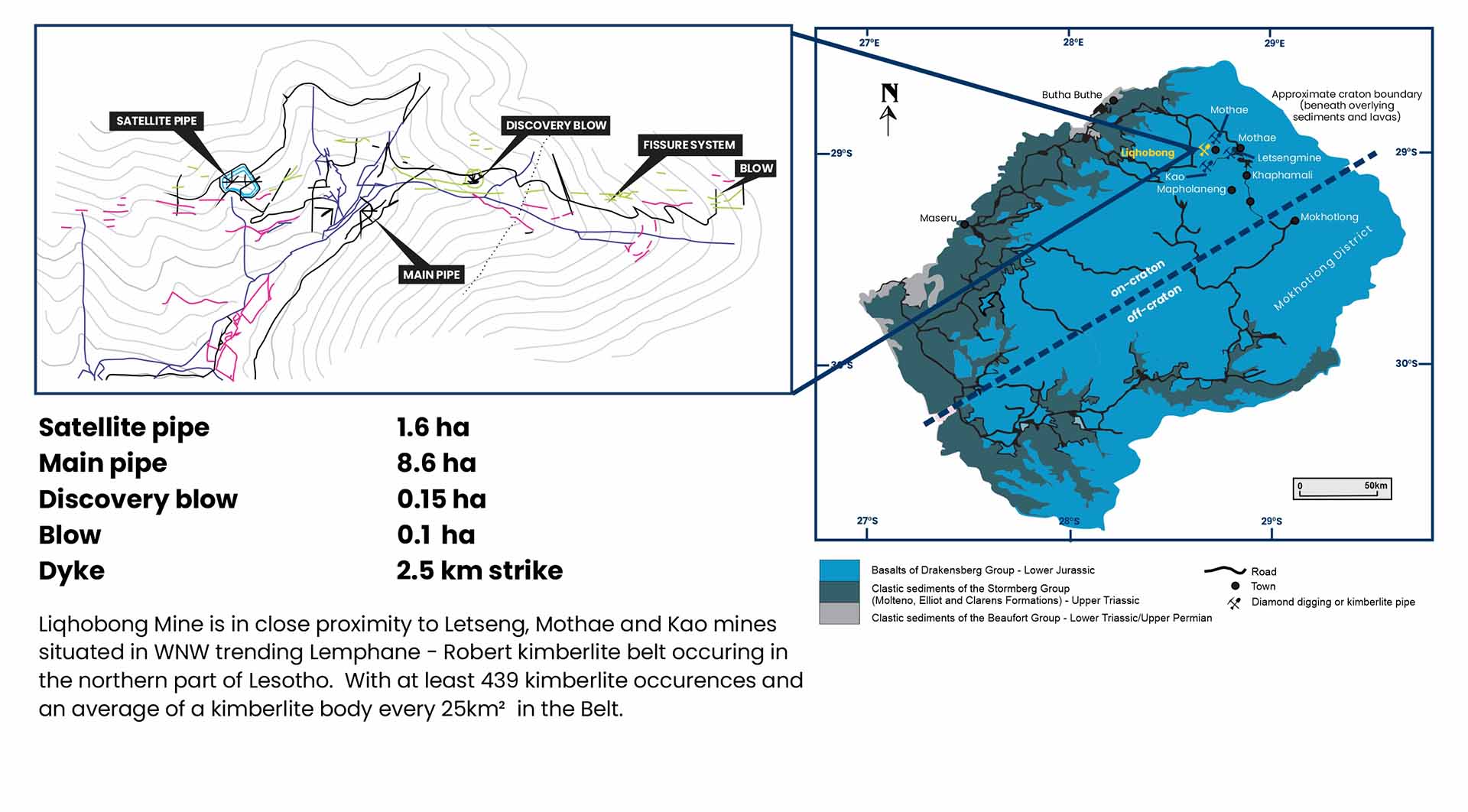Liqhobong Diamond Mine
Basutoland Diamonds Limited under the leadership of Colonel Jack Scott (funded by De Beers Consolidated Mines) evaluated various kimberlites including Liqhobong in the late 1950’s.
Subsequently, the property was explored and evaluated by several other owners (Minegem Inc. and European Diamonds plc later renamed Kopane Diamond Developments plc) who carried out delineation core drilling, microdiamond and bulk sampling, and geotechnical core drilling. This work formed the basis of a Definitive Feasibility Study which was completed by Firestone Diamonds during 2012.
Firestone raised US$40 million from existing shareholders, US$100 million from two new strategic investors, Pacific Road Capital and Resource Capital Funds, and negotiated a US$82.4 million project debt facility with Absa Bank in South Africa which was underwritten by the Export Credit Insurance Corporation of South Africa to fund construction of the Mine.
Construction of the Mine was completed during 2016 within the revised timeline and within the original US dollar budget. Full scale operations (3.6mtpa) commenced from mid-2017.
The kimberlite occurrences located within the Liqhobong mining license area include the Satellite pipe, Main pipe, Discovery blow and South-east blow, all situated on the Liqhobong main dyke. The Satellite pipe was previously mined out and the economically significant Main pipe was bulk sampled prior to construction between 2010 and 2012.
Where Liqhobong is situated
Liqhobong Mine is situated in the highlands of the Kingdom of Lesotho at an elevation of 2,675m above sea level, in the Butha-Buthe district. The area is mountainous and access to the Mine includes traversing a 35km unpaved mountain road.
The area hosts several other diamond mines namely Letseng, Kao, and Mothae, all within 25km of Liqhobong.

